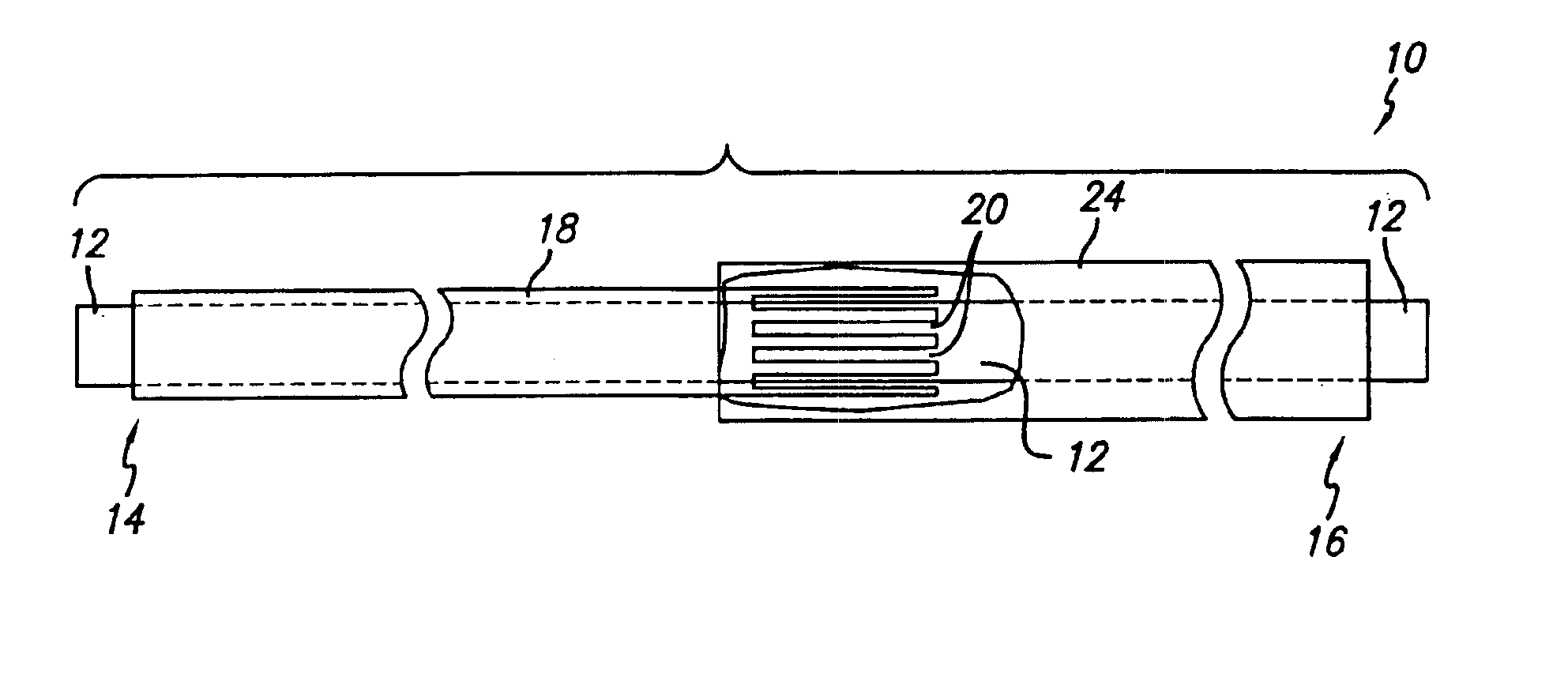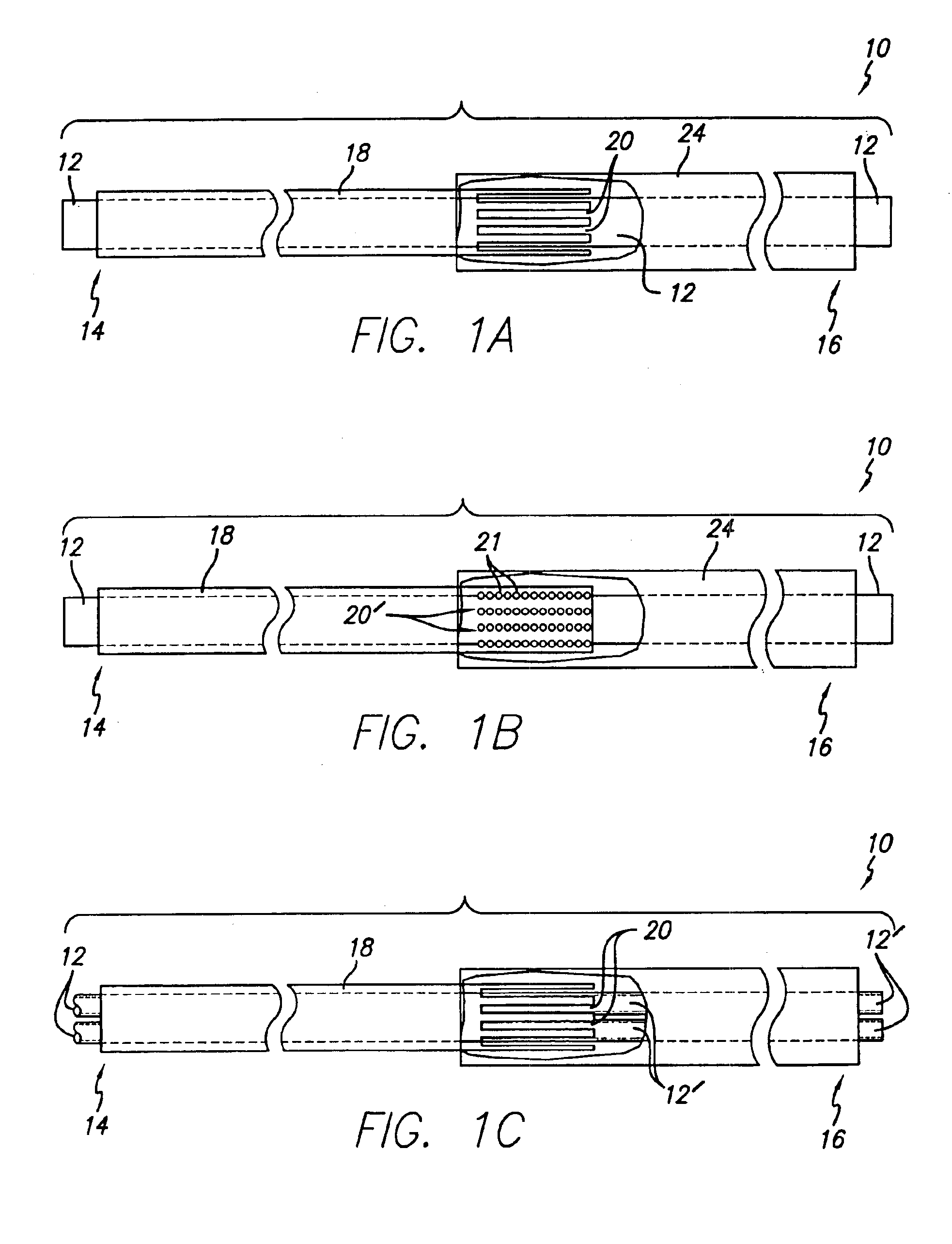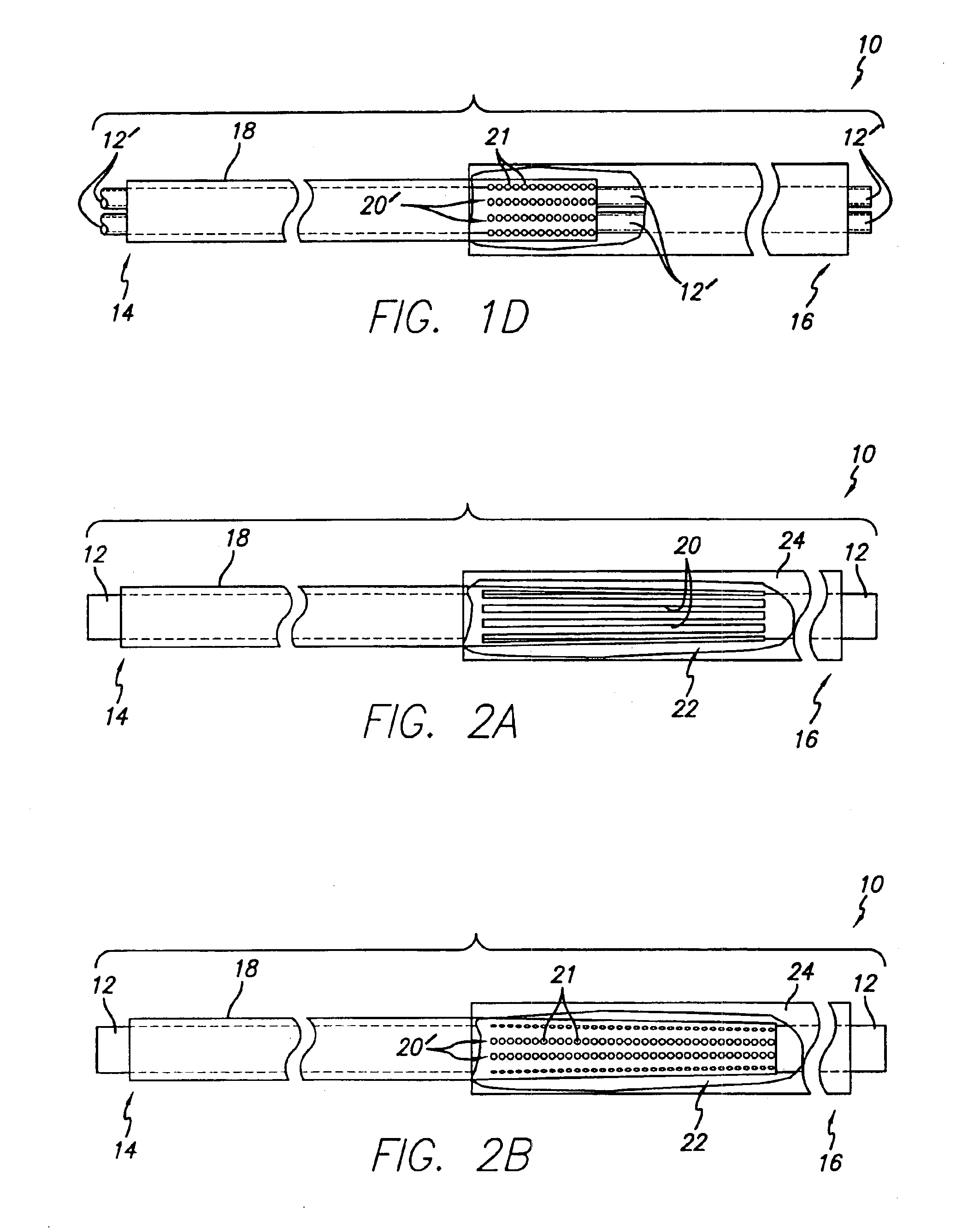Variable stiffness heating catheter
a heating catheter and variable stiffness technology, applied in the field of interventional medical devices, to achieve the effect of variable stiffness of the heating catheter
- Summary
- Abstract
- Description
- Claims
- Application Information
AI Technical Summary
Benefits of technology
Problems solved by technology
Method used
Image
Examples
Embodiment Construction
[0033]Modern interventional medical procedures have relied on ever smaller and more flexible devices to reach areas requiring treatment which were previously inaccessible to conventional devices, such as by the placement of vasoocclusive devices in tiny areas of damaged vasculature such as aneurysms or ruptures in arteries in the brain. Some devices to treat such areas use optical fibers to carry light energy to remote locations at the distal end of the heating catheter, but certain limitations have been found in currently available optical fibers for those purposes.
[0034]For example, conventional heating catheter technology has not been easily adaptable to catheter based imaging, treatments such as “thrombolyzing” blood or cutting tissue, or to the delivery of therapeutic agents, such as timed release agents, or embolics, since optical fibers, when used as a stand alone structural device, are not very torqueable, pushable or resilient. Small diameter optical fibers of the type most...
PUM
 Login to View More
Login to View More Abstract
Description
Claims
Application Information
 Login to View More
Login to View More - R&D
- Intellectual Property
- Life Sciences
- Materials
- Tech Scout
- Unparalleled Data Quality
- Higher Quality Content
- 60% Fewer Hallucinations
Browse by: Latest US Patents, China's latest patents, Technical Efficacy Thesaurus, Application Domain, Technology Topic, Popular Technical Reports.
© 2025 PatSnap. All rights reserved.Legal|Privacy policy|Modern Slavery Act Transparency Statement|Sitemap|About US| Contact US: help@patsnap.com



